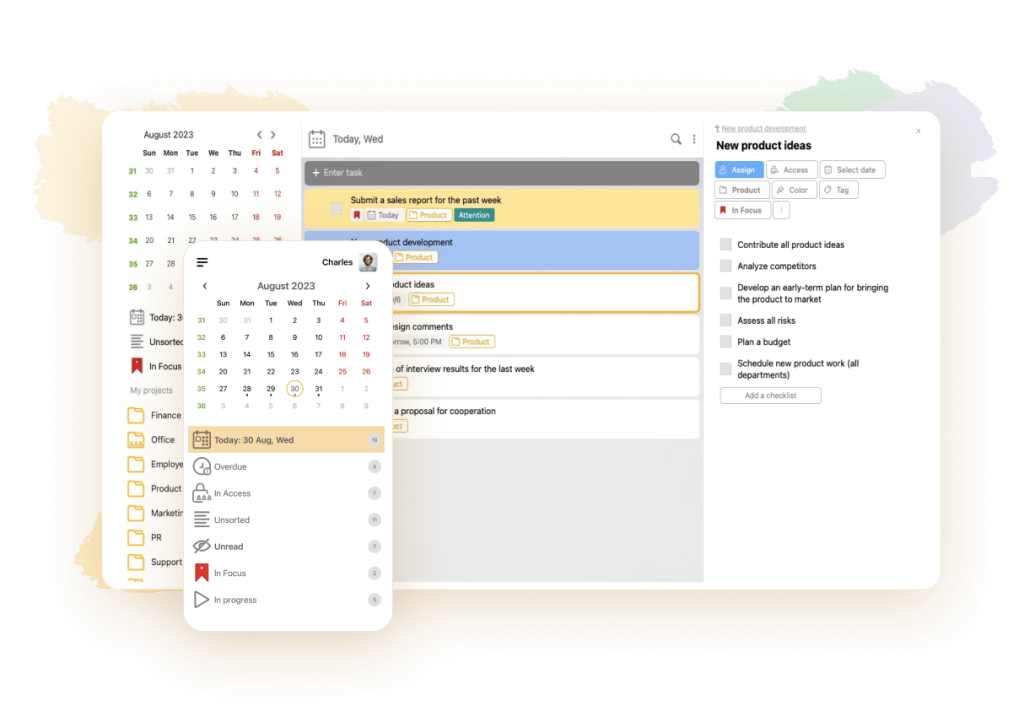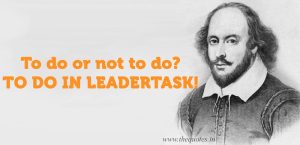Styles of leadership in management

Any modern team or group needs to be managed. But how to do it competently and correctly? After all, one and the same task can be conveyed to the performer in different ways: to threaten him with punishment or a fine if he fails to meet the deadline, or to encourage him for high-quality, professionally performed work. The approach chosen by the manager determines the performance of his subordinates, the emotional and psychological atmosphere in the team, the profitability and success of the company.
Various leadership styles are used for personnel management. On their basis they form their own models, manners of behavior of the manager and subordinates, delegate tasks and make decisions. Each manager has his own model of behavior, corresponding to the peculiarities of his character, personal qualities, the current situation in the company and many other factors.
In this review, let’s try to determine which leadership styles in management are more productive nowadays. How can you characterize leadership styles? This will help you understand your strengths and weaknesses as a manager and suggest what direction to take next.
Popular classifications of leadership styles

There are many classifications of leadership styles in management. Each of them is based on its own criteria and concepts. Let us consider the most universal of them, which can be used in various situations.
Kurt Lewin’s management styles
This basic typology was developed in the 30s of the last century by German psychologist Kurt Lewin. He defined and divided the manager’s management styles into three types: authoritarian, liberal and democratic.
Authoritarian (dictatorial) style
The authoritarian style or, as it is also called, directive style, is characterized by sole decision-making. All power is exclusively in the hands of one person. Managers in this role never consult with subordinates, control all work processes. Employees only perform the tasks assigned to them. This technique is better suited in situations that require quick decision-making, when the opinion of the team will not influence the solution of current issues. It justifies itself in periods of crisis in the company, when there is a lack of mutual understanding between management and subordinates. In this case, material incentives for performers are used as an incentive.
| Advantages | Disadvantages |
| Prompt decision-making, strict discipline in the team. | Low employee motivation. |
| Specifying tasks to employees according to deadlines or KPIs. | High staff turnover due to rapid burnout, decrease in staff quality. |
| Ability to get results quickly with limited resources. | All responsibility rests with the manager, which leads to stress and overload. |
An authoritarian leader is characterized by high consciousness, a high level of self-control, and penetrating ability. Such a leader can be called the “Iron Lady” Margaret Thatcher, who was Prime Minister of Great Britain from 1979 to 1990. She did not make concessions, considering it a rejection of her beliefs. She showed no sympathy for her subordinates, considering it a weakness, and throughout her tenure in power adhered to an authoritarian style. This is a prime example of this type.
Liberal style
In this acquiescent management model, the leader has minimal involvement in the team’s activities. He gives his subordinates full freedom of action, limiting himself to observation and advice. In this case, each team member is more individualized and feels his involvement in the common cause. He is not limited in creativity and self-realization.
| Advantages | Disadvantages |
| Effective team communication. | The leader must have complete trust in the team. |
| Active work of all participants in the work process, no limitations in creativity and generation of new ideas. | Suitable for small companies involved in creative endeavors. |
| The team is trying to achieve the best result with no clear financial incentive. | Liberal management is impossible in large-scale production and in industries that require strict adherence to instructions. |
| Favorable team environment. |
The combination of these factors positively affects the emotional background and job satisfaction of employees. This is one of its main disadvantages. Subordinates may perceive lack of involvement in the work process as indifference on the part of the manager. They will stop taking their duties seriously, knowing that in essence, no one will control them.
Democratic style
In this style, all decisions are made collegially. The manager does not control the work process itself, but the result. Shares responsibility for it with team members. Such a leader does not like to tell his subordinates. Acts by methods of persuasion. Ready to listen to any opinion, even if it contradicts his statements. The democratic model is suitable for companies with qualified, highly motivated staff.
| Advantages | Disadvantages |
| Highly motivated employees to get the best result. | Stretching decision-making time due to constant meetings. |
| Trusting and partnering relationships within the team. | The risk of not meeting task deadlines. |
| Loyalty of performers to management. | The manager must be able to handle objections and take criticism appropriately. |
| Sufficiently organized, responsible staff that does not require constant supervision. | Suitable only for mature, experienced teams capable of working independently. |
An example of a democratic leader: Walt Disney, the famous cartoonist and founder of the Disney studio. He always discussed his ideas with his subordinates and listened to their suggestions. But, depending on the situation, he always reserved the right to choose for himself.
Douglas MacGregor’s theory
The two original managerial theories of leadership were developed by Douglas McGregor in the 1960s. His ideas, published in The Human Side of Enterprise, were so groundbreaking and innovative in economics at the time that they quickly gained popularity and acceptance among managers in various countries.
The description of Theory X is based on the following statements:
- People are inherently lazy and try to avoid work in every way possible.
- For the normal functioning of the company, to achieve its goals, performers need to subordinate employees, make them work and control them.
- People willingly shift responsibility to others, allowing themselves to be led. It is inherent in their psychology.
This theory has found application in organizations that adhere to the authoritarian style. In folk art, this type of management is described clearly and succinctly: “I am the boss, you are the fool”.
The Y approach is built on the following postulates:
- The desire to work, to act is a natural need of man, given to him by nature.
- Anyone can learn self-organization and self-control by using a goal as motivation.
- The ability to be responsible for one’s actions, to make decisions is a natural quality characteristic of any mature person.
The above theses reflect the democratic management style based on delegation of authority and control of the result.
Blake-Moughton management lattice

This theory describes five managerial styles related to the care of people and the production process. It takes the form of a coordinate system consisting of 9 divisions vertically and horizontally. On the vertical scale the attitude to people is noted. On the horizontal scale – to the tasks at hand. The manager is given a score from 1 to 9 for his/her commitment to a particular strategy. Based on the data obtained, the following brief styles in management are defined:
- 1.1 Primitive. Such leaders do not care about what happens in the company, it happens that people are a secondary factor for them. They occupy their chair purely formally. This strategy is not able to exist for a long time. Sooner or later the basic management style will have to be changed or the company will simply cease to exist.
- 1.9 Social. Managers of this type are fully oriented to their subordinates. They are ready to support them at any moment and are attentive to the needs of their team. They are loved and appreciated by their performers, but may take advantage of the excessive softness of their superiors.
- 9.1 Authoritarian. They are the antipode of the previous type. For them it is important to fulfill tasks by any means. They make decisions themselves, not interested in the opinion of subordinates. They only obey all orders without question. They keep their distance, do not get close to their employees.
- 5.5 Production-Social. This management approach is a “golden mean” with regard to production tasks and communication with personnel. The manager tries to find a compromise with performers in solving all issues.
- 9.9 Team. The manager gets the maximum score on the “People” and “Tasks” scales. That is, he skillfully and competently organizes work in the team, involving its participants in the decision-making process. The team does not stop halfway, quickly copes with any tasks. It works smoothly and accurately as a single mechanism.
According to the theory’s developers, Blake and Moughton, the latter type of management is what all managers should strive for.
Emotional leadership and its six types

American writer and psychologist Daniel Goleman proposed his own approach to leadership in his work “Emotional Intelligence”, which was for a long time at the top of the New York Times. In it, he described six types of emotional management:
- Visionary. Suitable for companies planning to open new areas of development. Managers designate the direction of the team’s movement. The executors choose the methods and means independently.
- Mentoring. The team leader is focused on the development of team members and is a role model for them. He tries to connect the goals of each team member with the objectives of the project and the organization. This type of management is optimal for initiative teams striving for professional growth. However, because of active control, performers may become insecure.
- Affiliative style is based on maintaining harmony within the team by uniting all its members. It helps to establish communication, create a favorable psychological environment, and build trust between people. However, productivity and performance can suffer with this approach.
- Democratic. Based on collective management, joint decision-making. Not suitable for crisis situations requiring quick action.
- Directive. By setting high performance standards for his or her subordinates, the manager demands continuous improvement in results. This can have a negative effect on the performers. They may feel that despite their best efforts, they are doing everything wrong.
- Commander. It is used most often, but it is not effective due to a high proportion of criticism, dissatisfaction of subordinates. Justified in cases when it is necessary to take urgent measures to stabilize the situation.
How to choose the right leadership style
Both authoritarian and democratic styles in certain conditions increase the efficiency and effectiveness of employees. The main thing is to use them in the right environment.
The strategy of choosing a management model “for all times” is inherently utopian. Therefore, a new classification of managerial styles has emerged in management, including:
- A one-dimensional management model that does not change under the influence of external factors. It includes all classical styles: authoritarian, liberal, democratic.
- A multi-dimensional tactic that involves changing the form of management under the influence of different circumstances. This option is recognized as more workable and effective.
The choice of management model is influenced by:
- The personality type of the executive;
- Professional experience;
- Objectives;
- Company Scope;
- Features and characteristics of the team.
When going through different stages of development in companies, it is reasonable to apply appropriate management styles. When starting a startup, the main task of management is to survive in a difficult economic environment. Therefore, management should be concentrated in the same hands. In the case of sustainable growth, opening new areas, the initiative and involvement of personnel is important, etc.
LeaderTask: a functional application for HR management

The guarantee of successful completion of any project is the choice of an effective management style and a suitable tool for managing work processes. After all, in addition to organizing the management style and the work of the staff, the manager must establish many other related processes: assign tasks to performers, monitor their progress, and manage resources. It is also important to organize interaction between team members within one system.
All these tasks can be solved in the LeaderTask application. By delegating tasks to performers, the manager will be notified of deadlines and progress. He will be able to track the performance of each employee and compare his achievements with the overall success of the team. The program is suitable for planning, keeps in touch with all the things going on in the company. Helps to organize communication between performers and management through a convenient corporate chat.
The application will timely notify you when a new task or its status changes. It will not allow you to miss the critical deadline for its execution. It will help to organize well-coordinated work of employees, competently distribute tasks taking into account their importance and priority. Provides full control over the team’s activities.
Conclusion
There is no perfect management style. Each management style is characterized by its pros and cons. Therefore, the main task of every effective manager is to competently use different approaches and models, taking into account the situation in the company and the psychological situation in the team.
To successfully manage a business, experts recommend using situational management, selecting a leadership style that is more appropriate in a given situation. In order to achieve high results in work, it is important to learn how to strike a balance between different management models. It is this approach that will give a real chance for the successful implementation of any project.



